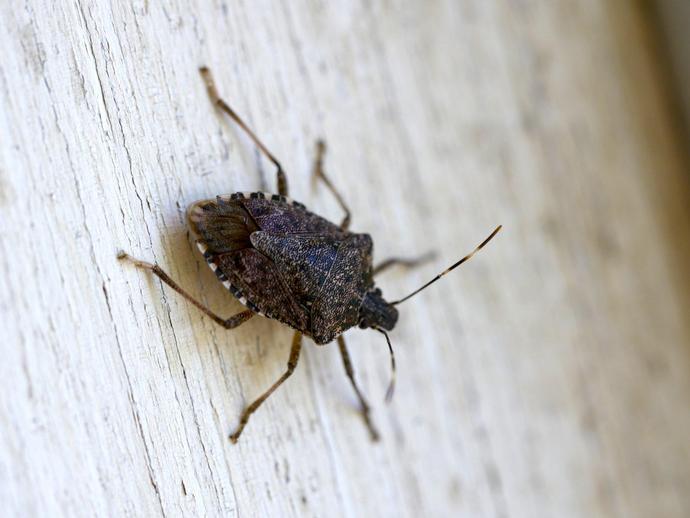March 28, 2021
We're reaching into the archives for today's #BenInNature update presented by our friends at Carter Bank & Trust! The following post was originally published on June 6, 2020.
I'm going to go out on a limb here and guess that everyone is intimately familiar with this critter, whether you want to be or not. This is Halyomorpha halys, better known as the brown marmorated stink bug.
These stink bugs are native to Asia, and they were first collected in the U.S. in 1998. They were found in Allentown, Pennsylvania, and it's believed they were stowaways in packing crates. Compared to many invasive species, they spread quite quickly; by 2010, they had become a major pest in orchards along the east coast. Some stone fruit growers lost more than 90 percent of their crops that year!
One of the reasons that these insects have been able to proliferate here is that unlike many insects, they aren't picky when it comes to what they eat. For example, awhile back we featured the spicebush swallowtail butterfly, which will only feed on plants belonging to the family Lauraceae; if the caterpillars are given leaves from trees belonging to a different family, they will literally starve to death before they take a bite. The brown marmorated stink bug, on the other hand, will feed on more than 100 different species of plants, including many important agricultural plants, such as soybeans, peaches, apples, raspberries, green beans, pears, cherries ... and the list goes on.
To make matters worse, the climate in the U.S. is just perfect for the brown marmorated stink bug. Pretty much everywhere in the U.S., these stink bugs are capable of producing at least one successful generation per year, and in warmer climates, they can produce as many as six! When you consider that a single female can lay about 400 eggs in her lifetime, the problem becomes pretty apparent.
In China, the primary predator of the brown marmorated stink bug is Trissolcus japonicus, a tiny parasitoid wasp that attacks stink bug eggs. Fortunately, several species of insects in the U.S. have begun to adapt to these invasive stink bugs. Isopods ("roly-polys") will eat stink bug eggs, and wheel bugs (Arilus cristatus) will readily eat both the eggs and the adults.
Like it or not, it seems brown marmorated stink bugs are here to stay.
ABOUT #BenInNature
Social distancing can be difficult, but it presents a great opportunity to become reacquainted with nature. In this series of posts, Administrator of Science Ben Williams ventures outdoors to record a snapshot of the unique sights that can be found in the natural world. New updates are posted Monday - Friday, with previous posts highlighted on the weekends. This series of posts is made possible thanks to the support of VMNH Corporate Partner Carter Bank & Trust (www.cbtcares.com).
NATURE PHOTO IDENTIFICATIONS
If you discover something in nature that you would like help identifying, be sure to message us right here on Facebook with a picture (please include location and date of picture) and we'll have our experts help you identify it!

 Hours & Admissions
Hours & Admissions Directions
Directions

